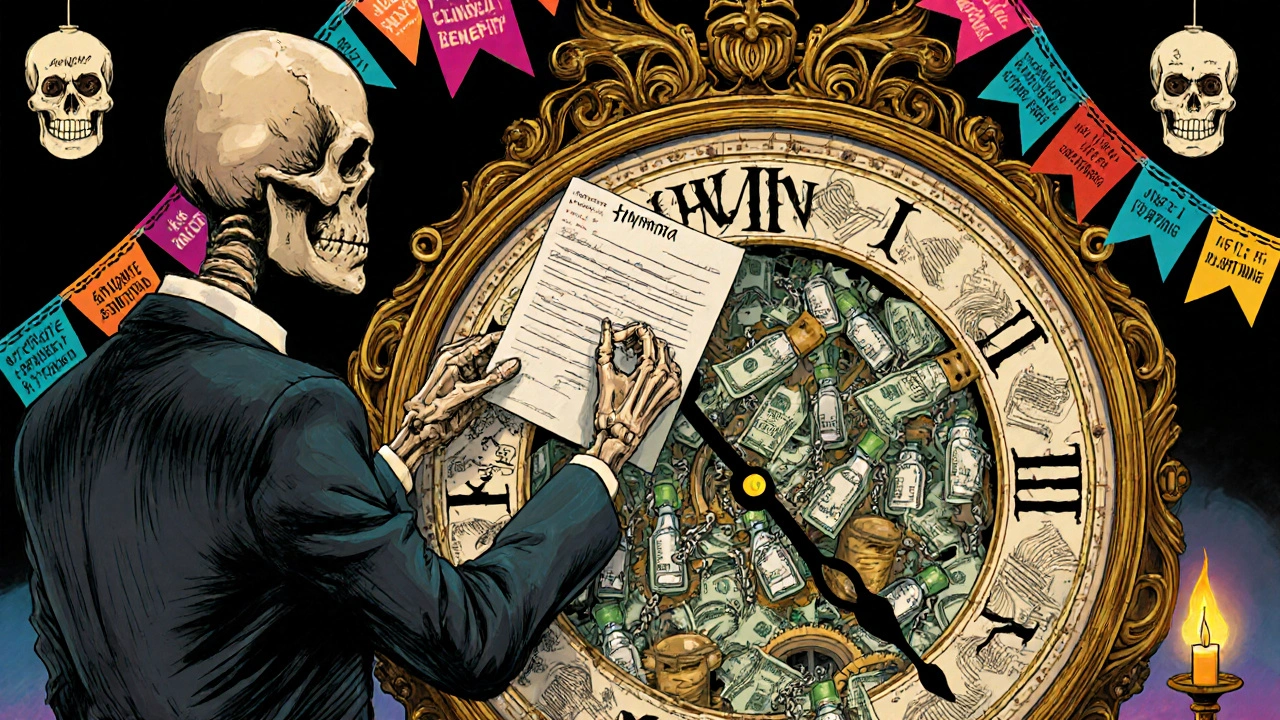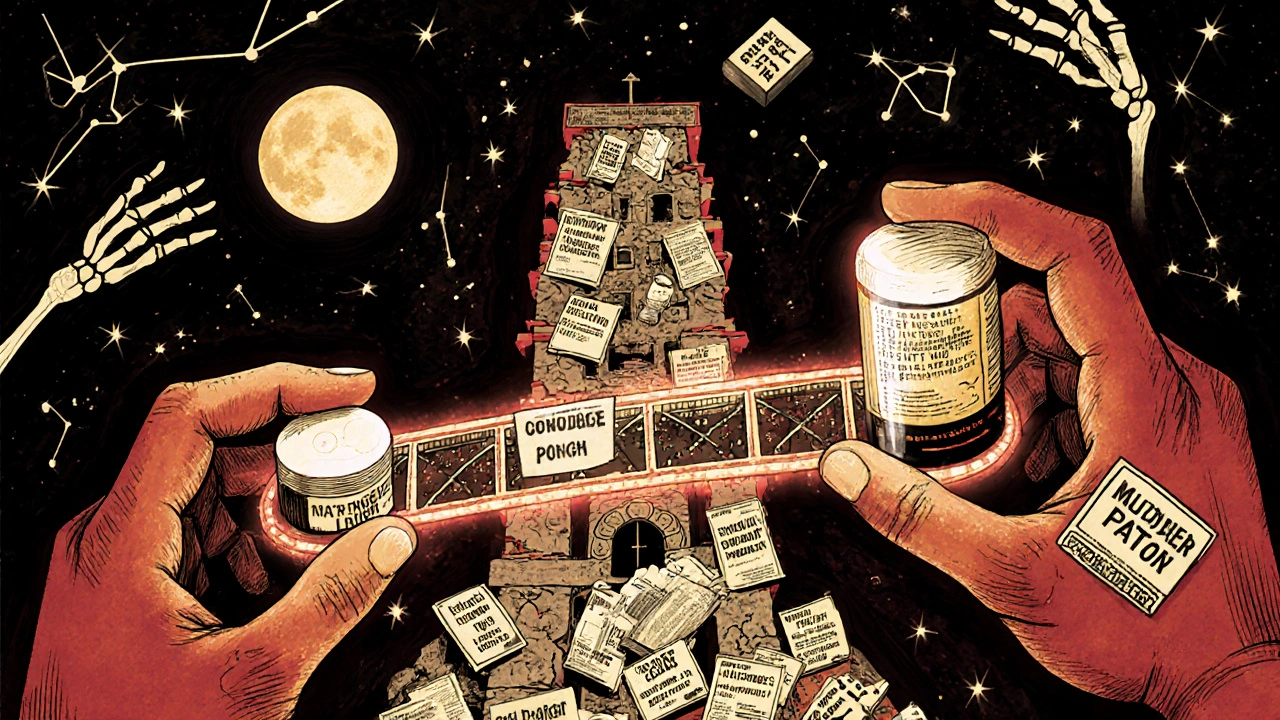When a drug’s patent expires, generics should flood the market-lowering prices, increasing access, and saving lives. But in reality, many brand-name drugs stay off-limits to generics for years, even decades, after their original patent runs out. That’s not because of breakthrough innovation. It’s because of evergreening.
What Evergreening Really Is
Evergreening isn’t about creating better medicine. It’s about extending monopoly control over a drug by filing new patents on tiny, often meaningless changes. A pill that’s been on the market for 15 years gets a new coating, a slightly different dose, or a new delivery method-like switching from a daily tablet to a once-a-week capsule. Then the company files a new patent. Suddenly, the clock resets. Generics can’t enter. Prices stay high.
This isn’t an accident. It’s a calculated business model. After the 1984 Hatch-Waxman Act in the U.S. created a clear path for generic drugs to enter the market, pharmaceutical companies didn’t slow down-they doubled down on patent filings. Instead of spending billions on new drugs, they started spending millions on minor tweaks to old ones. Harvard researchers found that 78% of new patents on prescription drugs were for existing medications, not new ones.
How It Works: The Playbook
Here’s how it actually plays out in real life:
- Formulation changes: Changing the time-release mechanism. A drug that used to need two pills a day now comes as one pill that lasts 24 hours. Sounds convenient? Maybe. But it’s the same active ingredient.
- Combination drugs: Taking two existing drugs and putting them in one pill. Patent the combo. Block generics of each individual drug.
- Product hopping: The brand pulls its original drug off the market and replaces it with a new version-often with a slightly different delivery system. Doctors are nudged to prescribe the new version. Pharmacies can’t substitute the old generic. Patients are trapped.
- Pediatric exclusivity: Run a small study on children-even if the drug isn’t meant for them-and get six extra months of protection.
- Orphan drug status: Claim the drug treats a rare disease (even if it’s widely used for common conditions) to get seven years of exclusivity.
AstraZeneca did this with Prilosec, a heartburn drug. When its patent neared expiration, they launched Nexium-a nearly identical drug with a slightly different chemical structure. They marketed it as “the purple pill,” spent hundreds of millions on ads, and convinced doctors and patients to switch. Prilosec became a generic. Nexium stayed branded-for over a decade longer.
The Humira Case: A Patent Thicket
No company has mastered evergreening like AbbVie with Humira, a biologic drug used for rheumatoid arthritis, Crohn’s disease, and psoriasis. Instead of one patent, AbbVie filed 247 patent applications around Humira. Over 100 were granted. This created a legal maze-what experts call a “patent thicket.”
Generic manufacturers didn’t just face one patent to challenge. They had to fight dozens, each with different claims: dosage ranges, manufacturing methods, storage conditions, even how the drug is injected. The cost to litigate? Millions. The risk? Losing everything. So most stayed out. Humira stayed alone on the market for over 20 years. In 2023, it generated over $40 million in daily revenue.
In 2022, the U.S. Federal Trade Commission sued AbbVie, calling the patent strategy “anticompetitive.” But even after the lawsuit, Humira’s exclusivity didn’t end until 2023-long after the original patent expired.

Why This Hurts Patients
When generics enter, prices drop-fast. Studies show generic versions typically cost 80-85% less than the brand-name drug within the first year. For patients on chronic medications, that’s the difference between taking their pills and skipping doses.
Take diabetes drugs. AstraZeneca’s patent extensions on drugs like Onglyza and Farxiga added over 90 years of combined exclusivity across six products. Millions of people rely on these drugs. Many are on fixed incomes. When generics are blocked, they pay hundreds more per month. Some skip refills. Others ration doses. The human cost is real.
Low- and middle-income countries suffer even more. The World Health Organization has called evergreening a major barrier to affordable medicines. In places where public health systems are stretched thin, every extra dollar spent on branded drugs means fewer tests, fewer screenings, fewer life-saving treatments.
Is It Legal? Yes. Is It Ethical? That’s the Question
Evergreening exploits loopholes in patent law, not breaks them. The U.S. Patent Office approves these patents because they meet the legal standard of “novelty” and “non-obviousness”-even when the changes are trivial. Courts often side with pharma companies because the burden of proof is on generic manufacturers to show the modification is pointless.
Pharma companies argue they’re just protecting their investments. They say patents incentivize innovation. But here’s the truth: developing a brand-new drug costs about $2.6 billion and takes 10-15 years. Evergreening? A fraction of that. A new formulation can cost under $50 million and take a few years. The return on investment? Huge.
It’s not innovation. It’s financial engineering.

What’s Changing? The Pushback Begins
Regulators are starting to push back.
- The U.S. Inflation Reduction Act of 2022 lets Medicare negotiate prices for some of the costliest drugs-undermining the financial logic of evergreening.
- The European Medicines Agency now requires companies to prove a new version offers “significant clinical benefit” before granting extra exclusivity.
- The U.S. Patent Office has tightened rules on “obviousness” in pharmaceutical patents, rejecting some obvious tweaks.
- Several states in the U.S. have passed laws requiring disclosure of evergreening tactics to state health agencies.
But the biggest shift might come from public pressure. As more people realize their insulin, heart medication, or arthritis drug is being held hostage by legal tricks, demand for reform grows. Patient advocacy groups are suing. Lawmakers are introducing bills to cap patent extensions. The tide is turning-slowly.
What Patients Can Do
You can’t change patent law overnight. But you can take control:
- Ask your doctor if a generic version exists-even if your prescription says the brand name. Sometimes, generics are available under a different label.
- Check with your pharmacy about therapeutic alternatives. Sometimes another drug in the same class works just as well and is already generic.
- Use patient assistance programs. Many drugmakers offer discounts if you qualify.
- Support policy changes. Contact your representatives. Demand transparency around patent extensions.
Every time you choose a generic, you’re voting against evergreening. Every time you speak up, you weaken its grip.
The Bigger Picture
Pharmaceutical innovation matters. New drugs save lives. But the system is broken when the same company makes billions off the same molecule for 30 years-not because it’s better, but because it’s protected by paperwork.
Evergreening isn’t about science. It’s about money. And as long as the rules reward legal tricks over real progress, patients will keep paying the price.
Is evergreening illegal?
No, evergreening is not illegal-it’s a legal strategy that exploits loopholes in patent law. Companies file patents for minor changes like new dosages, delivery methods, or combinations of existing drugs. As long as these modifications meet the legal bar for “novelty” and “non-obviousness,” patent offices approve them. Courts have generally sided with pharmaceutical companies, placing the burden on generic manufacturers to prove the changes are meaningless.
How long can a drug stay protected through evergreening?
The original patent lasts 20 years from filing. But through evergreening, companies can extend protection for decades. For example, AbbVie’s Humira had its original patent expire in 2016, but due to over 200 additional patents, generic versions weren’t allowed until 2023-seven years later. AstraZeneca’s six drugs gained over 90 combined years of extended exclusivity. In some cases, total protection can reach 30-40 years.
Do evergreened drugs actually work better?
Almost never. Studies show that most evergreened drugs offer no meaningful clinical improvement over the original. A 2020 study in the journal BMJ found that over 90% of new formulations approved under evergreening strategies provided no additional benefit to patients. The changes-like switching from a tablet to a liquid or adding a coating-are often about marketing, not medicine.
Why don’t generic companies fight these patents?
Fighting multiple patents is expensive and risky. A single patent lawsuit can cost $5 million to $10 million. When a company files 100+ patents-as AbbVie did with Humira-it creates a “patent thicket.” Generic manufacturers can’t afford to challenge them all. Even if they win one case, another patent might still block entry. Many choose to wait or settle instead of risking bankruptcy.
Are there any countries that stop evergreening?
Yes. India’s patent law explicitly rejects evergreening. Under Section 3(d), patents can’t be granted for minor modifications unless they significantly improve therapeutic efficacy. The country famously blocked Novartis’ attempt to patent a modified version of its cancer drug Glivec. The European Union also requires proof of “significant clinical benefit” before granting extra exclusivity. These policies have helped speed up generic access and lower drug prices.
Can Medicare negotiate prices for evergreened drugs?
Yes. The Inflation Reduction Act of 2022 allows Medicare to negotiate prices for 10 high-cost drugs in 2026, expanding to 15 more by 2029. Evergreened drugs like Humira, Ozempic, and Eliquis are on the list. If Medicare negotiates lower prices, it reduces the financial incentive for companies to extend patents through minor tweaks. This could be the biggest threat to evergreening in decades.